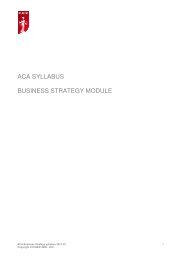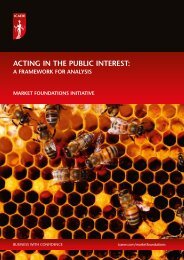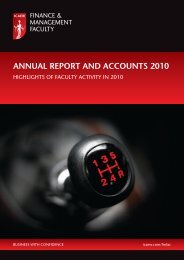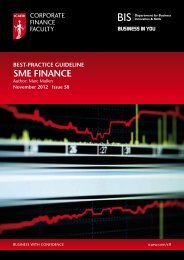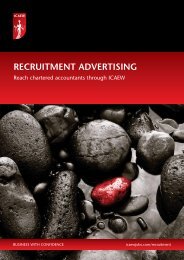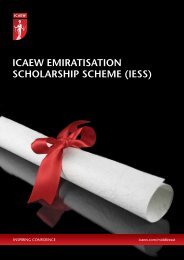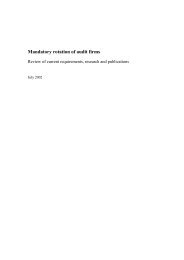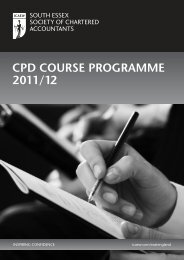Auditor independence and non-audit services - ICAEW
Auditor independence and non-audit services - ICAEW
Auditor independence and non-audit services - ICAEW
Create successful ePaper yourself
Turn your PDF publications into a flip-book with our unique Google optimized e-Paper software.
PART 4OVERALL SUMMARY AND CONCLUSIONS11.1 Overall summaryCHAPTER 11OVERALL SUMMARY AND CONCLUSIONS11.1.1 Models of <strong>audit</strong>or <strong>independence</strong>Formal modelling studies generally show that the joint provision of <strong>audit</strong> <strong>and</strong> NAS byincumbent <strong>audit</strong>ors does not adversely affect <strong>audit</strong>or <strong>independence</strong>. This is asignificant finding, in that it allows us to see that economic incentives generally act toproduce independent behaviour on the part of <strong>audit</strong>ors.Other studies recognise behavioural factors, drawing upon concepts in moralpsychology. Experimental studies have found that the individual <strong>audit</strong>or’s level ofethical cognition has a significant impact on <strong>audit</strong> decisions. These studies are basedon hypothetical <strong>audit</strong> conflict scenarios <strong>and</strong> conducted in artificial settings. Themediating influence of the <strong>audit</strong> firm’s culture is just beginning to be explored in suchstudies.There also exist broader-based frameworks of <strong>audit</strong>or decision making that sacrificethe rigour of formal modelling in order to encompass a comprehensive set of factors(economic, behavioural, regulatory <strong>and</strong> contextual). One of these frameworks hasbeen developed from recent UK case studies of real-life <strong>audit</strong> conflict situations.11.1.2 Current regulatory frameworksFive <strong>audit</strong>or <strong>independence</strong> regulatory frameworks are reviewed in detail, those for theUK, the US, Australia, EC <strong>and</strong> IFAC. There is recognition that <strong>independence</strong> is amatter of degree, rather than an absolute concept. The frameworks all distinguishbetween <strong>independence</strong> in fact (referred to as <strong>independence</strong> of mind) <strong>and</strong> <strong>independence</strong>in appearance, both being important. In considering the appearance of <strong>independence</strong>,it is the views of a reasonable <strong>and</strong> informed third party that are to be taken intoaccount. Apart from the US framework, a principles-based approach is taken. The USframework is a predominantly rule-based approach comprising a series ofprohibitions, although several principles are stated outside the framework.The other frameworks identify five threats – self-interest, self-review, advocacy,familiarity or trust, <strong>and</strong> intimidation. There are four main sources of safeguards –regulatory, <strong>audit</strong> firm, client company <strong>and</strong> refusal to act. The discussion of threats <strong>and</strong>safeguards does not distinguish between <strong>independence</strong> in fact <strong>and</strong> in appearance. Inrelation to the joint provision of <strong>services</strong>, only intimidation does not appear a relevantthreat. The practical application of <strong>independence</strong> frameworks to small companies israised in the frameworks.The guidelines (rules in the case of the US) in relation to a range of NAS areexplicitly compared. There is less convergence among the frameworks about the levelof threat which arises from internal <strong>audit</strong> <strong>and</strong> the installation of financial informationsystems than there is for the other threats. With the exception of the UK framework,where the recommended upper level of economic dependence for a firm is defined,59




